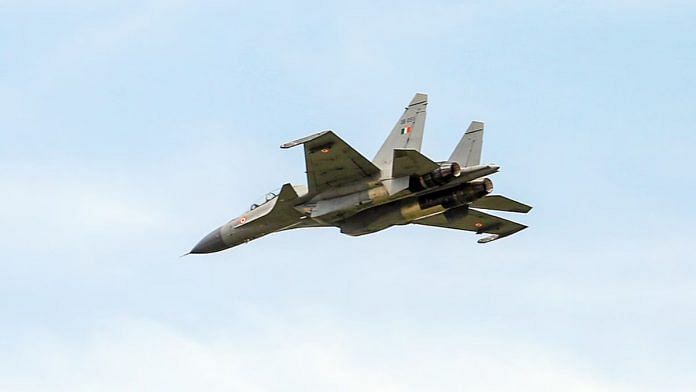New Delhi: In a key move, India and Japan will carry out their maiden bilateral air combat exercise early 2023 seeking to increase the interoperability between the two countries amid tensions with China.
The exercise, which will see India’s Su 30 MKI in action, will be carried out from 16 January to 26 January at the Hyakuri Air Base and its surrounding airspace in Omitama, and the Iruma Air Base in Sayama.
Sources in the Indian defence establishment said the aim of the combat exercise with Japan Air Self Defense Force (JASDF) was to strengthen defence cooperation between the forces, enhance tactical skills and promote mutual understanding.
As per the plan, over 150 IAF personnel will take part in the exercise. According to a statement released by the JASDF, the participating units will include four F-2s, 7th Air Wing (Hyakuri), four F-15s, Air Tactics Development Wing (Komatsu) and Central Aircraft Control and Warning Wing (Iruma).
“This is the first time that IAF is conducting an air combat exercise with Japan. The purpose of this is to enhance tactical skills on both sides through several activities, seminars, and drills. This will also further foster the bilateral relations between the two nations,” a source said explaining the significance of the programme.
India and Japan do conduct both Army and Navy level exercises. In February this year, both armies came together for “EX DHARMA GUARDIAN-2022” in Belagavi, Karnataka, where they trained in house-interventions drills, raid on terrorist hideouts in semi-urban terrain, combat first aid, unarmed combat and close-quarter combat firing.
The bilateral Army exercise was started in 2018 while the Indian Navy has been conducting the Japan India Maritime Exercise (JIMEX), every year since 2012.
The primary focus of the naval exercise has been on anti-submarine warfare and Air Defence tactics.
Japan, which has largely remained pacifist since World War II, is now increasingly focusing on defence preparedness.
Last week, Japan unveiled its USD 320 billion security strategy which includes drastically expanding its defence capabilities and developing new “counter strike” capabilities.
The surprising five-year plan will make Japan the world’s third-biggest military spender after the United States and China, based on current budgets.
Also read: India, Japan exchange notes on China, agree to ‘four-point plan’ on Ukraine crisis






